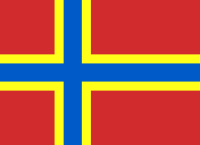Our first stop on Westray was to see the puffins, signposted off the main road by a hand-illustrated sign. Barely 100 yards from the bikes the first puffins were nesting on the turf in the cliffs below us. A woman who arrived at the same time as us clapped her hands in glee. Puffins must be Britain's cutest bird, not just for their colourful appearance, but for their comical gait and big dangling feet when coming in to land. Apparently they are a delicacy in Iceland!
Westray puffins:

Around the corner from the car park there were hundreds of puffins. Usually you have to travel to inaccessible offshore skerries to see puffins - it's incongruous to see them so close with cars and houses behind!
Westray from Fitty Hill:

It was hard to imagine that Westray had anything to top the puffins, but remember I mentioned in a previous post that there was more to Orkney than UNESCO heritage sites? No better illustration of this can be found than in the islands of Westray and Papa Westray. The latter has the Knap of Howar - the oldest house found in northern Europe, dating from roughly 3800BC. The former has two remarkable monuments in its tiny museum. One is the Westray Stone. This deeply carved neolithic lintel was found in a quarry on Westray, and spent years in the main Orkney museum in Kirkwall. Now it is back home:
The Westray Stone:

There's nothing like it found elsewhere in Britain: only the carvings at Newgrange in Ireland match it.
The other remarkable monument is tiny, a neolithic human figurine with a face and breasts. It is extremely rare, the oldest human figure found in Britain, and archaologists have called it the 'Orkney Venus'. In Westray museum I overheard a more affectionate local name for her: the 'Peedie Wifie'. This was found at an archaeological dig at the Links of Noltland, a beautiful sandy bay being eaten by the sea. The neolithic village that was uncovered at the Links of Noltland was as extensive and impressive as Skara Brae: but rather than making it publicly accessible, the archaeologists filled the site in after excavation to protect it. Such is the richness - and fragility - of archaeological remains in Orkney.
The Westray Wife:

It's remarkable that two pieces of such international importance like the Stone and the Wife are currently exhibited in a small, volunteer run museum. The Wife is only being exhibited in Westray until the end of October, before being returned to the national museum in Edinburgh. Take your chance now this summer to see it at home!








_web.JPG)
_web.JPG)
_web.JPG)
_web.JPG)













